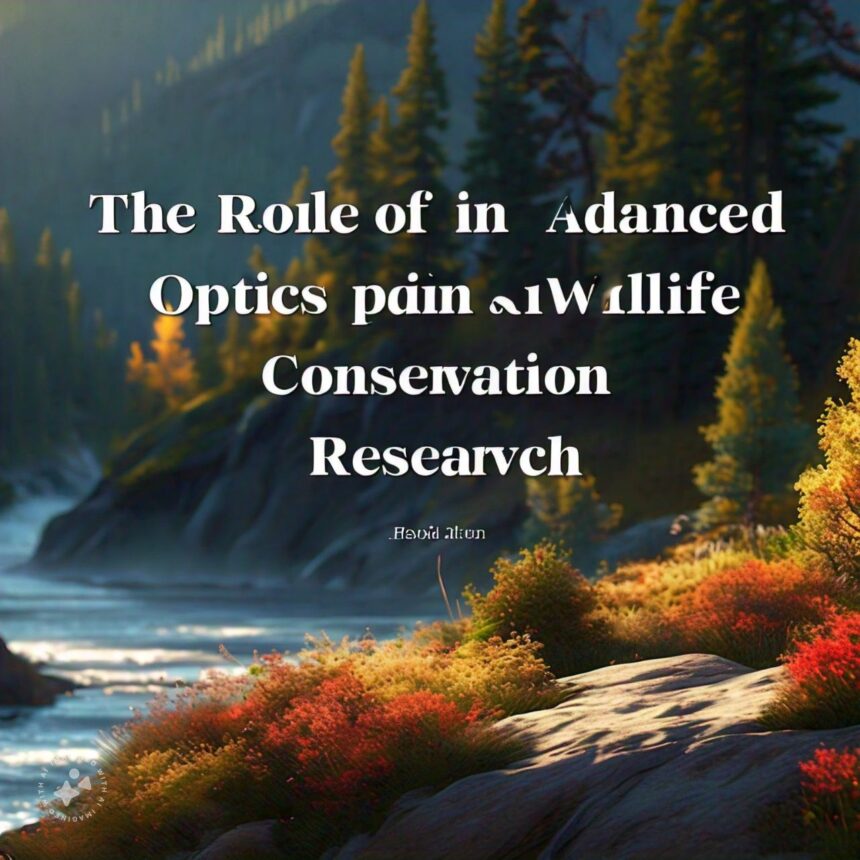Advanced optics technology has revolutionized the field of wildlife conservation and research, providing scientists and conservationists with powerful tools to monitor, study, and protect wildlife in their natural habitats. From tracking elusive species to assessing ecosystem health, modern optical devices such as thermal imaging, high-resolution binoculars, and sophisticated monoculars play a crucial role in enhancing our understanding and preservation efforts.
Enhancing Wildlife Monitoring and Tracking:
One of the primary applications of advanced optics in wildlife conservation is the monitoring and tracking of animal populations. Traditional methods, such as direct observation and camera traps, often fall short when it comes to detecting nocturnal or shy species. Thermal imaging technology, for example, allows researchers to observe animals in complete darkness by detecting their heat signatures. This capability is particularly valuable for studying nocturnal species and understanding their behaviors without disturbing their natural activities.
Improving Data Collection and Accuracy:
Advanced optical devices enhance the accuracy and efficiency of data collection in the field. High-resolution binoculars and monoculars enable researchers to observe animals from a safe distance, minimizing human impact on wildlife while collecting vital information on population sizes, health, and migration patterns. Tools like thermal monoculars online provide detailed thermal images that help in identifying individual animals, assessing their body condition, and monitoring their movements over time.
Facilitating Habitat Assessment and Management:
Optical technologies also play a significant role in habitat assessment and management. By using aerial thermal imaging and high-powered optics, conservationists can evaluate the health of ecosystems, identify areas affected by deforestation, poaching, or climate change, and implement targeted conservation strategies. These technologies enable a comprehensive analysis of large and remote areas, ensuring that conservation efforts are both effective and sustainable.
Supporting Anti-Poaching Efforts:
Advanced optics are instrumental in combating poaching and illegal wildlife trade. Thermal cameras and night vision devices allow rangers to monitor protected areas more effectively, even under low-light conditions. These tools increase the chances of detecting and deterring poachers, thereby enhancing the security of vulnerable species.
Aiding in Behavioral Studies:
Understanding animal behavior is essential for effective conservation planning. Advanced optics enable researchers to observe and document behaviors that are otherwise difficult to study, such as mating rituals, hunting strategies, and social interactions. High-powered lenses and thermal imaging provide clear and unobtrusive means to gather behavioral data, contributing to more informed and nuanced conservation strategies.
Promoting Citizen Science and Public Engagement:
Modern optical technologies have also opened doors for citizen science initiatives, allowing the public to participate in wildlife monitoring and conservation efforts. By providing accessible tools like binoculars and monoculars, enthusiasts and volunteers can contribute valuable data and support conservation projects. This widespread engagement fosters a greater appreciation for wildlife and encourages community involvement in preservation efforts.
Future Innovations in Optical Technology:
The future of wildlife conservation will continue to benefit from advancements in optical technology. Innovations such as lightweight, portable thermal monoculars, enhanced image processing, and integration with artificial intelligence will further improve the capabilities of researchers and conservationists. These developments promise to make wildlife monitoring more efficient, accurate, and accessible, ultimately supporting more effective conservation outcomes.
Conclusion:
Advanced optics play an indispensable role in wildlife conservation and research, providing the tools necessary to monitor, study, and protect wildlife effectively. From thermal imaging to high-resolution monoculars, these technologies enhance our ability to understand and preserve the natural world. As optical technology continues to evolve, its applications in conservation will expand, offering even greater support for efforts to safeguard biodiversity and ensure the sustainability of ecosystems for future generations.
Furthermore, innovations such as drone-mounted optics allow for aerial surveys of large and inaccessible areas, providing data on population sizes, migration patterns, and habitat conditions. Spectral imaging technologies can also identify the health of vegetation and detect changes in ecosystems that may affect wildlife. These tools, combined with data analytics, contribute to creating more accurate models for predicting ecological changes and developing targeted conservation strategies.
Read Also: Technewspure
As optical technology advances, it is expected to integrate with other emerging technologies, such as artificial intelligence and machine learning, to automate the detection and analysis of wildlife and environmental changes. This will not only improve the efficiency of conservation efforts but also enable proactive measures to protect biodiversity, ensuring that ecosystems thrive for generations to come.


